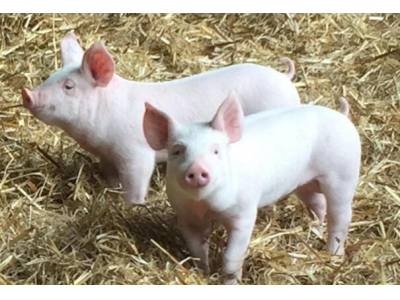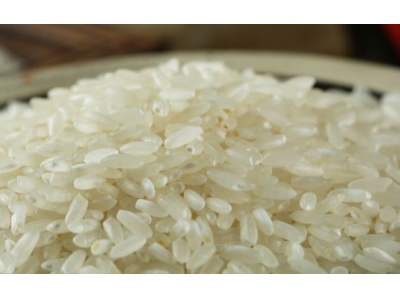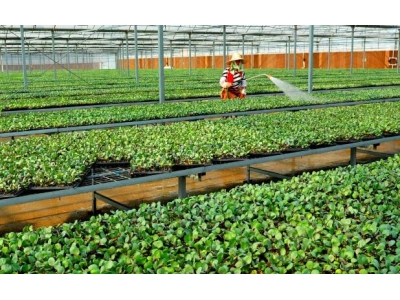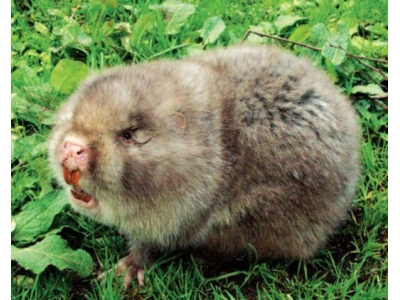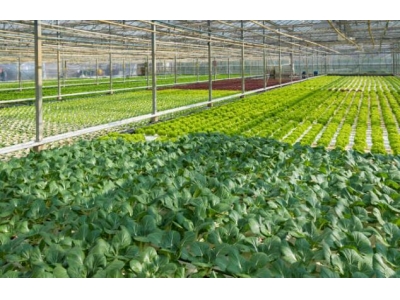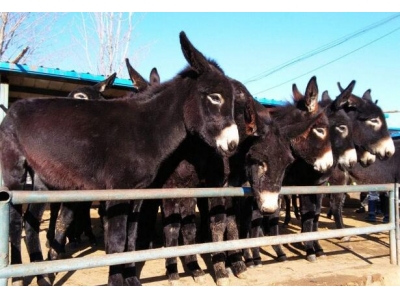一、新冠灭活疫苗和重组蛋白疫苗混打有什么危害?
BREAKING NEWS:阳了,三个大人都阳了。2022年12月14日中午11点多,猪队友通知我她抗原检测阳性了,我也回家下午自测也阳了,老妈阴性,15日上午老妈再测阳了,17日夜儿子阴性。我和猪队友只是干咳,轻微流涕,没有发烧,所以以为是感冒而已。老妈只是一身酸痛(含头痛)而已,她也以为不是新冠。她们俩都还有嗅味觉减退症状,15~16日有几道菜咸得要命,她们觉得不咸,猪队友还闻不出儿子香香。看来我们家的是优质毒株。19日夜和20日夜我两次抗原检测都阴性了,21日夜老妈弱阳性,24日阴性。
新冠十大症状:发热、干咳、乏力、嗅味觉减退、鼻塞、流涕、咽痛、结膜炎、肌痛、腹泻。
2021年6月3日和27日,我在广州打了两针科兴灭活疫苗。2022年3月5日上午,我在广州洛溪渔人码头打了新冠肺炎加强针。序贯加强免疫对Omicron变异株的保护效力较高,序贯加强免疫可用智飞龙科马的重组蛋白疫苗或康希诺的腺病毒载体疫苗,终于可以不用灭活疫苗了,大多数广东人感染过AD5腺病毒可能导致接种腺病毒载体疫苗无效,我赶紧选打重组蛋白疫苗。
打加强针前,我在“广州疾控i健康”公众号上预约选了智飞龙科马重组蛋白疫苗,现场登记人员还是填为科兴灭活疫苗,还好我检查发现了要求改正,他还要我在重新打印的同意书上手写一遍“自愿接受异源序贯加强针接种”,打针的护士对拆疫苗盒的说“这个是智飞的”,我估计可能是比较少人用。打了加强针过了十天,尚未发现有什么不良反应,粤康码的疫苗接种信息才更新。
2月17日老妈率先完成了新冠疫苗加强针接种,三针都是我建议的科兴灭活疫苗。
我打了两针科兴满180天后,又等了两个月等到了序贯接种,3月选择打了智飞重组蛋白疫苗,三针均与钟南山院士同款,我的精准研判与钟南山最新研判一致。
4月猪队友也打了智飞重组蛋白疫苗,三针均与我同款。
4月3日儿子打了一针科兴,5月8日打了第二针,大陆内地幼儿可用疫苗只有灭活疫苗。
复必泰疫苗在内地审批了一年多还没批准,都成了专供港澳台同胞和在华外籍人士,12月新版复必泰二价疫苗已经在美国、香港、澳门等地上市了。我再也不想用灭活疫苗了,希望今后用重组蛋白疫苗或mRNA疫苗。我是考虑换国籍在内地打新版复必泰后再换回来,还是去澳门一日游打针?
2021年6月初,中国科兴控股生物技术有限公司董事长尹卫东接受中国央视采访时表示:“特别需要注意的是,新冠疫苗的第三剂注射需要有一定的要求,就是不同疫苗不可以替换接种,比如第一针第二针接种的灭活疫苗,那么第三针同样也要接种灭活疫苗,不能够使用腺病毒疫苗、重组亚单位疫苗。”嘴上都是主义,心里全是生意。打第三针科兴新冠疫苗抗体可跳十倍:尹卫东曾称需要研究测试
为应对新冠病毒的变化,提高现有新冠疫苗效果,目前世界卫生组织支持灵活的同源疫苗和异源疫苗接种计划。对于考虑异源接种方案的国家,推荐采用与首剂接种不同技术路线的新冠疫苗进行后续剂次接种。邵一鸣介绍,采用新冠疫苗序贯加强免疫接种主要有两个目的:一是不同疫苗之间可以优势互补,二是不同人体质不一样,可能对某一类疫苗产生的副作用多一些,采用不同技术路线疫苗接种可以规避副反应。新冠疫苗序贯加强免疫接种五问 权威解答在这里专家:建议尽快为老年人及高风险人群进行加强免疫--健康・生活--人民网钟南山:中国会在动态清零中逐步开放,但完全开放不适用
二、禽流感灭活疫苗中的灭活是什么意思?
就是消灭了活性的意思。在生产疫苗的过程中,把致病微生物的致病能力去除,而保留其抗原特性,就是灭活。
致病微生物没有活性,也就是没有致病性,对人体才是安全的,才能给人接种。
而其保留了抗原特性,在进入人体后,人的免疫系统才能识别反应,从而产生对改病原微生物的保护性抗体,使人不再患病。
致病微生物没有活性,并不一定说致病微生物是死的。像你问的禽流感灭活疫苗,就是活的,只不过是不能致病罢了。
三、鸭用重组禽流感病毒H5N1亚型灭活疫苗怎么使用?
过期疫苗,对动物来说还是可以用的,就是效果降低了不少,一般疫苗厂家的产品实际效期是高于标注效期的。具体用不用,你可以考虑考虑。
四、禽流感灭活疫苗疫苗冷冻了。还能用吗?
不对,冻融过的疫苗其质量会下降的。还是不要用了,否则损失了就太不值了。
五、重组禽流感病毒h5亚型二价灭活疫苗可以饮水免疫吗?
可以饮水免疫,不过疫苗不要做多了。
1,做禽流感疫苗就不要做新城疫疫苗。2,做新城疫疫苗就不要做禽流感疫苗。3,疫苗做多了只有坏处没有好处。4,任何疫苗不做也可以的。5, 保不得禽流感病。六、重组禽流感病毒h5三价灭活疫苗放在冷冻里还能用吗?
不可以,因为灭活苗都是死苗,必须通过注射才能起到应有的作用你,口服油苗无效。
七、灭活疫苗为什么要挑选强毒株?
灭活疫苗,即人们在获得病毒以后,对其进行一定的处理,可以使病毒完全丧失活性,从而得到被杀死的病原微生物,进而制成灭活疫苗。通俗的说灭活疫苗就是一种被杀死的病毒,将其输入人体,既不会使人染病,又可以促使人体产生抗体,抵御病毒入侵。 减毒活疫苗是指保留一定的剩余毒力和免疫性制成疫苗,接种人体后,使机体产生一定的感染而获得免疫力。弱毒(活)疫苗分为自然毒株和人工致弱毒株两类。
八、灭活疫苗多少钱
The topic of vaccination has been a prominent one recently, with the ongoing COVID-19 pandemic that has affected the entire world. As scientists and researchers work tirelessly to develop effective vaccines, one type of vaccine that has gained attention is the inactivated vaccine, also known as a "灭活疫苗" in Mandarin. In this blog post, we will delve into the concept of inactivated vaccines and explore their significance in the fight against infectious diseases.What is an inactivated vaccine?
An inactivated vaccine, as the name suggests, is created by using a non-infectious version of the pathogen causing the disease. This is achieved by either fully killing the pathogen or rendering it incapable of replication. The inactivated pathogen is then used to stimulate an immune response in the vaccinated individual without causing the actual disease. By doing so, the immune system learns to recognize and combat the pathogen when encountered in the future.
Production process of inactivated vaccines
The production process of inactivated vaccines follows a standardized set of steps to ensure their safety and efficacy:
- Virus cultivation: The targeted pathogen is isolated and cultivated under controlled laboratory conditions. This step is crucial to obtain a sufficient quantity of the virus for further processing.
- Inactivation: Once sufficient virus quantity is obtained, either chemicals, heat, or radiation are used to inactivate the pathogen without compromising its structural properties.
- Purification: The inactivated virus is then purified to remove any unwanted substances, such as the chemicals used for inactivation, cellular debris, or other impurities.
- Formulation: The purified inactivated virus is mixed with other components, such as adjuvants, stabilizers, and preservatives, to create the final vaccine formulation.
- Quality control: The formulated vaccine undergoes rigorous testing to ensure its safety, potency, and sterility. This includes evaluating its ability to induce an immune response and absence of any contamination.
- Storage and distribution: Once approved, the inactivated vaccine is packaged, stored under appropriate conditions, and distributed to healthcare facilities for administration.
Uses of inactivated vaccines
Inactivated vaccines have been successfully used to prevent a variety of infectious diseases, including:
- Polio: The inactivated polio vaccine (IPV) has been instrumental in the global efforts to eradicate polio. IPV is given as a series of shots to provide long-term protection.
- Hepatitis A: Inactivated vaccines for Hepatitis A have proven to be highly effective in preventing this viral liver disease.
- Influenza: Each year, inactivated influenza vaccines are developed to protect against different strains of the influenza virus.
- Rabies: Inactivated rabies vaccines are used for both pre-exposure prophylaxis in high-risk individuals and post-exposure treatment after potential exposure to the rabies virus.
Advantages of inactivated vaccines
Inactivated vaccines offer several advantages:
- Safety: Inactivated vaccines cannot cause the disease they are designed to protect against. This makes them safe for a wide range of individuals, including those with weakened immune systems.
- Long-lasting immunity: Inactivated vaccines often provide longer immunity compared to live attenuated vaccines. This reduces the need for booster doses.
- No risk of reversion: Inactivated vaccines do not carry the risk of reverting to a virulent form, unlike live attenuated vaccines. This makes them suitable for individuals with compromised immune systems.
- Stability: Inactivated vaccines are generally more stable and have fewer storage requirements compared to live vaccines, making their distribution and administration easier.
Cost of inactivated vaccines
The cost of inactivated vaccines varies depending on multiple factors, such as:
- Manufacturing process: The complexity of the manufacturing process and the requirements for purification and quality control can influence the cost of inactivated vaccines.
- Research and development: Extensive research is conducted to develop and refine inactivated vaccines, which contributes to their overall cost.
- Distribution: The cost of distributing inactivated vaccines to healthcare facilities, particularly in remote areas, can impact their overall price.
It is important to note that the price of inactivated vaccines can vary between different countries and healthcare systems. In some cases, governments may subsidize or provide inactivated vaccines at reduced costs to ensure widespread availability.
To obtain accurate and up-to-date information on the cost of inactivated vaccines, it is advisable to consult local healthcare authorities, vaccination centers, or healthcare providers in your region. They can provide detailed information based on your specific requirements, including any potential discounts or subsidies available.
Conclusion
Inactivated vaccines play a crucial role in protecting individuals and communities from infectious diseases. Through their safe and effective mechanism, they have contributed significantly to the prevention and control of various viruses. While the cost of inactivated vaccines may vary, their impact on public health makes them a valuable investment. Stay informed, get vaccinated, and together we can build a healthier future.
九、禽流感h5三价灭活疫苗可以支接饮用吗?
可以饮水免疫,不过疫苗不要做多了。
1,做禽流感疫苗就不要做新城疫疫苗。
2,做新城疫疫苗就不要做禽流感疫苗。
3,疫苗做多了只有坏处没有好处。
4,任何疫苗不做也可以的。
十、兽用活疫苗与灭活疫苗区别?
兽用活疫苗和灭活疫苗是两种不同类型的兽医疫苗,它们在制备方法、免疫原性以及应用方面有所不同。
1.制备方法:兽用活疫苗是通过使用活性微生物、病毒或细菌等作为免疫原,经过适当的处理使其失去致病性但保留免疫原性,然后作为疫苗接种给动物。而灭活疫苗则是通过使用已经被灭活或杀死的微生物、病毒或细菌作为免疫原,通常通过化学或物理方法来杀灭其致病性。
2.免疫原性:兽用活疫苗在接种后可以在动物体内复制,产生持续性免疫效应,使动物获得较长时间的免疫保护。而灭活疫苗通常需要辅助剂或多次接种才能获得持久的免疫效应。
3.安全性:兽用活疫苗可能存在一定的安全风险,因为它们是活性微生物,病毒或细菌,有可能引起病原性复苏、毒性反应或不良反应。而灭活疫苗通常较为安全,因为其使用的微生物、病毒或细菌已经被灭活或杀死,不能复制和致病。
4.应用方面:兽用活疫苗通常用于动物的初次免疫,尤其是在动物暴露于病原微生物时,可以迅速产生免疫应答。而灭活疫苗通常用于动物的补充免疫,以巩固和延长动物的免疫保护。
总的来说,兽用活疫苗和灭活疫苗在制备方法、免疫原性、安全性和应用方面存在差异。在选择使用哪种类型的疫苗时,需要考虑动物的免疫需求、疫情情况、免疫程序以及疫苗的安全性和有效性等因素,并在兽医的指导下进行合理的应用。

